Cancer in sub-Saharan Africa: a Lancet Oncology Commission
- PMID: 35550267
- PMCID: PMC9393090
- DOI: 10.1016/S1470-2045(21)00720-8
Cancer in sub-Saharan Africa: a Lancet Oncology Commission
Abstract
In sub-Saharan Africa (SSA), urgent action is needed to curb a growing crisis in cancer incidence and mortality. Without rapid interventions, data estimates show a major increase in cancer mortality from 520 348 in 2020 to about 1 million deaths per year by 2030. Here, we detail the state of cancer in SSA, recommend key actions on the basis of analysis, and highlight case studies and successful models that can be emulated, adapted, or improved across the region to reduce the growing cancer crises. Recommended actions begin with the need to develop or update national cancer control plans in each country. Plans must include childhood cancer plans, managing comorbidities such as HIV and malnutrition, a reliable and predictable supply of medication, and the provision of psychosocial, supportive, and palliative care. Plans should also engage traditional, complementary, and alternative medical practices employed by more than 80% of SSA populations and pathways to reduce missed diagnoses and late referrals. More substantial investment is needed in developing cancer registries and cancer diagnostics for core cancer tests. We show that investments in, and increased adoption of, some approaches used during the COVID-19 pandemic, such as hypofractionated radiotherapy and telehealth, can substantially increase access to cancer care in Africa, accelerate cancer prevention and control efforts, increase survival, and save billions of US dollars over the next decade. The involvement of African First Ladies in cancer prevention efforts represents one practical approach that should be amplified across SSA. Moreover, investments in workforce training are crucial to prevent millions of avoidable deaths by 2030. We present a framework that can be used to strategically plan cancer research enhancement in SSA, with investments in research that can produce a return on investment and help drive policy and effective collaborations. Expansion of universal health coverage to incorporate cancer into essential benefits packages is also vital. Implementation of the recommended actions in this Commission will be crucial for reducing the growing cancer crises in SSA and achieving political commitments to the UN Sustainable Development Goals to reduce premature mortality from non-communicable diseases by a third by 2030.
Copyright © 2022 Elsevier Ltd. All rights reserved.
Conflict of interest statement
Declaration of interests JD and KG received grants or contracts from Takeda Pharmaceutical, Johnson and Johnson, AstraZeneca, Cepheid, Merck, and Pfizer as funding for specific cancer projects. JG has served as previous chair of the South African National Advisory Committee on Cancer Control and Prevention, secretary general of the International Society of Paediatric Oncology Africa, and was part of the executive committee for the South African Children's Cancer Study Group. OWB received a P30 National Cancer Institute cancer grant to Johns Hopkins University and has had a leadership or fiduciary role paid or unpaid at Lyell Immunopharma, PDS Biotech, and Grail. OWB has stock or stock options with Lyell Immunopharma and PDS Biotech. AR received the Schneider-Lesser award as a junior faculty grant. TRR served as principal investigator on grants from the National Cancer Institute including: P20 CA233255, R01CA207365, and U01CA184374. These provided support to African cancer research activities, not directly related to the Commission. TRR received consulting fees from serving on 13 US cancer centre scientific advisory boards. None of these overlap in content with the Commission. All other authors declare no competing interests.
Figures
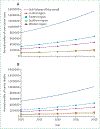
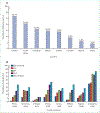


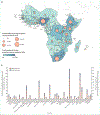

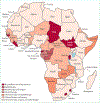

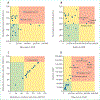


Comment in
-
Rays of Hope: the IAEA ups its commitment to cancer care.Lancet Oncol. 2022 Jun;23(6):702-703. doi: 10.1016/S1470-2045(22)00138-3. Epub 2022 May 9. Lancet Oncol. 2022. PMID: 35550265 No abstract available.
-
Cancer in sub-Saharan Africa: the time to act is now.Lancet Oncol. 2022 Jun;23(6):701-702. doi: 10.1016/S1470-2045(22)00208-X. Epub 2022 May 9. Lancet Oncol. 2022. PMID: 35550269 No abstract available.
-
Preventing cancer and achieving optimal oncology outcomes in sub-Saharan Africa.Lancet Oncol. 2022 Jun;23(6):708-709. doi: 10.1016/S1470-2045(22)00225-X. Epub 2022 May 9. Lancet Oncol. 2022. PMID: 35550270 No abstract available.
-
African culture, traditional medicine, and cancer care.Lancet Oncol. 2022 Jun;23(6):705-706. doi: 10.1016/S1470-2045(22)00157-7. Epub 2022 May 9. Lancet Oncol. 2022. PMID: 35550271 No abstract available.
-
Cancer in sub-Saharan Africa: key research and action gaps.Lancet Oncol. 2022 Jun;23(6):703-705. doi: 10.1016/S1470-2045(22)00185-1. Epub 2022 May 9. Lancet Oncol. 2022. PMID: 35550272 No abstract available.
-
Religion, cancer, and sub-Saharan African health systems.Lancet Oncol. 2022 Jun;23(6):706-708. doi: 10.1016/S1470-2045(22)00209-1. Epub 2022 May 9. Lancet Oncol. 2022. PMID: 35550276 No abstract available.
References
-
- WHO. WHO report on cancer: setting priorities, investing wisely, and providing care for all 2020. https://apps.who.int/iris/handle/10665/330745 (accessed Aug 23, 2021).
-
- Addai BW, Ngwa W. COVID-19 and cancer in Africa. Science 2021; 371: 25–27. - PubMed
-
- WHO. Second round of the national pulse survey on continuity of essential health services during the COVID-19 pandemic 2021. https://www.who.int/publications/i/item/WHO-2019-nCoV-EHS-continuity-sur... (accessed Aug 23, 2021).
-
- UN. Childhood cancer care in Africa hit hard by pandemic Aug 13, 2021. https://news.un.org/en/story/2021/08/1097752 (accessed Aug 23, 2021).
-
- Ferlay J, Colombet M, Soerjomataram I, et al. Estimating the global cancer incidence and mortality in 2018: GLOBOCAN sources and methods. Int J Cancer 2019; 144: 1941–53. - PubMed
Publication types
MeSH terms
Grants and funding
LinkOut - more resources
Full Text Sources
Medical
Research Materials

